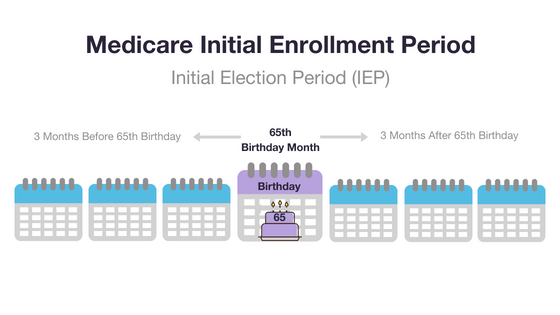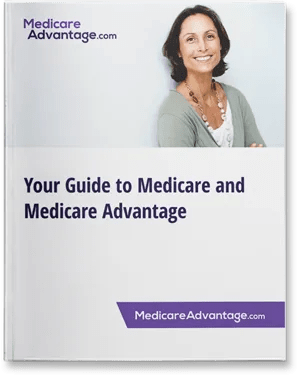Original Medicare (Parts A and B) doesn’t cover routine dental or vision care. 2024 Medicare Advantage (Part C) plans can cover benefits Original Medicare doesn’t cover, but dental and/or hearing benefits may not be available where you live. Learn more and find out how to compare the plans and benefits available in your area.
Read moreOriginal Medicare (Medicare Parts A and B)
Each part of Original Medicare provides different benefits. Part A provides hospital coverage and Part B provides non-emergency medical coverage.
3 things to know about Original Medicare:
- It’s a federal health insurance program that covers U.S. citizens and permanent legal residents who are 65 and older, and those with certain disabilities or End Stage Renal Disease.
- Original Medicare consists of Part A and Part B.
- Part B is optional and comes with a monthly premium.
Medicare is a federal program that ensures U.S. citizens and permanent legal residents 65 years of age and older and younger individuals with certain disabilities or End Stage Renal Disease have affordable health care coverage options.
Over 66 million people were enrolled in Medicare in 2023, according to the Centers for Medicare & Medicaid Services.1
There are 4 parts of Medicare: Parts A, B, C, and D. Each part offers different covered services.
“Original Medicare” refers to Medicare Parts A and B. These parts are provided by the federal government. Medicare Part C health plans and Part D prescription drug plans are provided by private insurance companies.
You can learn more by exploring our content resources and by visiting Medicare.gov the official website of Medicare.
Eligibility and enrollment
In order to qualify for Medicare coverage, you must be at least 65 years old and a citizen (or permanent legal resident) of the United States.
You also may qualify if you are under 65 and receive Social Security disability benefits, or if you have ALS (Lou Gehrig's Disease) or End-Stage Renal Disease.
Some people are enrolled in Medicare automatically. If you are not automatically signed up for Medicare, you will have to sign up for it manually.

The first time you can enroll in Medicare is typically during your Initial Enrollment Period (IEP).
Your IEP is a seven-month period that begins three months before you turn 65 years old, includes the month of your birthday and continues for an additional three months.
If you don't sign up for Medicare during your IEP, you will have to wait until the General Enrollment Period to enroll.
The Medicare General Enrollment Period takes place from January 1 to March 31 each year.
More info: Medicare eligibility and enrollment
Benefits
Each part of Original Medicare provides different benefits.
- Part A provides coverage for inpatient care at hospitals and skilled nursing facilities.
- Part B provides coverage for doctor’s appointments and other outpatient care, along with durable medical equipment (DME) and certain preventive care.
More info: Medicare benefits
Costs
Most people qualify for premium-free Part A. If you don't qualify for premium-free Part A, you will have to pay either $311 per month or $565 per month in 2026 for your Part A coverage.
- Beneficiaries who have paid Medicare taxes for between 30 and 39 quarters (between 7.5 and 10 years) will pay $311 per month for their Part A benefits.
- Beneficiaries who paid Medicare taxes for fewer than 30 quarters (7.5 years) will pay $565 per month for Part A.
Part B comes with a standard premium that is $202.90 per month in 2026. Higher income earners may pay more for their Part B premiums because of the IRMAA (or Income-Related Monthly Adjustment Amount).
Both Part A and Part B have out-of-pocket costs such as deductibles, coinsurance and copayments.
Medicare acceptance
Original Medicare is accepted by the majority of health care providers in all 50 states, Washington D.C., Puerto Rico, Guam, the U.S. Virgin Islands and the Northern Mariana Islands.
Many health care providers may accept Medicare assignment. This means that they accept Medicare reimbursement as payment in full for their services or items.
Providers who don't accept Medicare assignment do not accept the Medicare-approved amount as full payment. They reserve the right to charge up to 15 percent more than the Medicare-approved amount for their services or items.
Medicare Part A
Part A is hospital insurance and is the first half of Original Medicare. Its coverage includes inpatient hospital stays, hospice care, and skilled nursing facility care.
Generally, you must have Medicare Part A to get Medicare Parts B, C, or D.
It is premium-free for most Medicare enrollees.
More info: Medicare Part A
Medicare Part B
Part B is medical insurance and is the second half of Original Medicare. Its coverage includes outpatient hospital care, preventative care, doctors services, and other non-emergency medical care.
You must pay a monthly premium to get Part B coverage.
More info: Medicare Part B
What does Original Medicare not cover?
In most cases, Original Medicare does not provide coverage for any of the following:
- Cosmetic care
- Dental care
- Vision
- Prescription drugs
- Long-term (or “custodial”) care
- Acupuncture
- Hearing aids
- Routine foot care
- Alternative medicine
- Foreign health care
Frequently asked questions about Original Medicare
Does Medicare cover End-Stage Renal Disease?
Medicare Part A and Part B benefits are typically available to people who have been diagnosed with End-Stage Renal Disease (ESRD), even if they are under age 65.
What is and isn't covered under Medicare?
Original Medicare covers inpatient health care and outpatient medical treatment that includes preventive care, durable medical equipment and other treatment and therapy services.
Original Medicare doesn't cover things like retail prescription drugs, routine dental care and most long-term care.
Learn more about how to get coverage for things Original Medicare doesn't cover
Does Medicare cover pre-existing conditions?
Original Medicare typically covers pre-existing conditions. A Medicare Special Needs Plan (SNP) is a type of Medicare Advantage plan that can cover specific pre-existing conditions and diseases such as cancer, diabetes, chronic heart failure and more.
Learn more about Medicare coverage for pre-existing conditions
What if I lose my Medicare card?
You can order a replacement Medicare card through the Social Security Administration over the phone, online or in person. It can take up to 30 days for your new Medicare card to arrive in the mail.
Learn how to order a replacement Medicare card
Do Part B premiums go up?
The Part B premium typically increases slightly each year. The standard Part B premium in 2026 is $202.90.
Learn more about Part B premiums and other costs that may go up each year
Shop for the best Medicare plan for your needs
Medicare Advantage plans cover everything that Part A and Part B cover and may offer benefits not found in Original Medicare.
Call today to speak with a licensed insurance agent who can help you find Medicare Advantage plans in your area and find a plan that fits your coverage needs.

About the author
Christian Worstell is a senior Medicare and health insurance writer with MedicareAdvantage.com. He is also a licensed health insurance agent. Christian is well-known in the insurance industry for the thousands of educational articles he’s written, helping Americans better understand their health insurance and Medicare coverage.
..Christian Worstell is a senior Medicare and health insurance writer with MedicareAdvantage.com. He is also a licensed health insurance agent. Christian is well-known in the insurance industry for the thousands of educational articles he’s written, helping Americans better understand their health insurance and Medicare coverage.
Christian’s work as a Medicare expert has appeared in several top-tier and trade news outlets including Forbes, MarketWatch, WebMD and Yahoo! Finance.
Christian has written hundreds of articles for MedicareAvantage.com that teach Medicare beneficiaries the best practices for navigating Medicare. His articles are read by thousands of older Americans each month. By better understanding their health care coverage, readers may hopefully learn how to limit their out-of-pocket Medicare spending and access quality medical care.
Christian’s passion for his role stems from his desire to make a difference in the senior community. He strongly believes that the more beneficiaries know about their Medicare coverage, the better their overall health and wellness is as a result.
A current resident of Raleigh, Christian is a graduate of Shippensburg University with a bachelor’s degree in journalism.
If you’re a member of the media looking to connect with Christian, please don’t hesitate to email our public relations team at Mike@tzhealthmedia.com.









